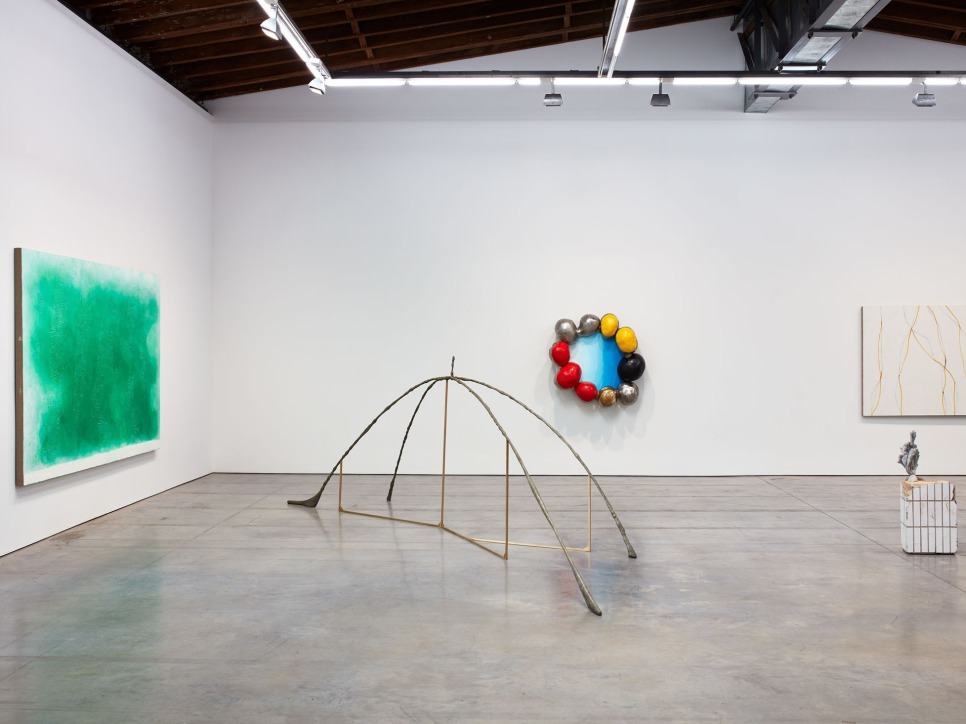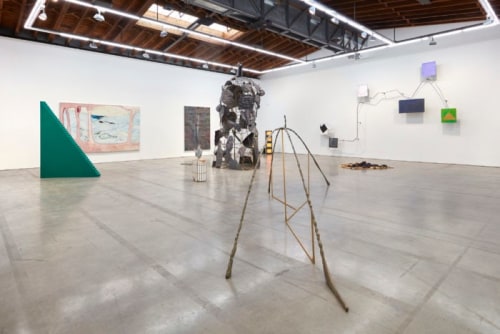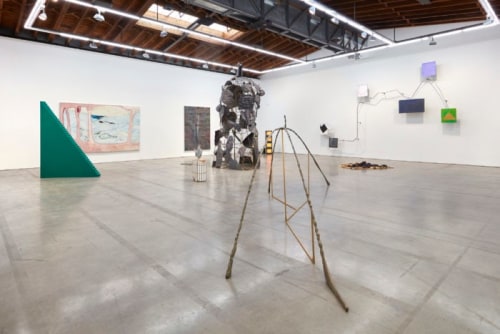

A Composite Leviathan at Luhring Augustine Bushwick. Works by (left to right) Liu Fujie, Zeng Hong, Nabuqi, Zhang Ruyi, Zhao Yang, Yang Jian, He Wei, Wu Di, Zhang Xinjun.
Image courtesy of the artists, WHITE SPACE BEIJING, ShanghART Gallery, Don Gallery, and Luhring Augustine, New York.
Sometimes, it is best to just let the art speak for itself. That seems to be the closest thing to an underlying theme in A Composite Leviathan, on view at Luhring Augustine’s Bushwick space until December 21st. Beijing-based curator James Elaine (alumnus of the Hammer Museum and the Drawing Center) has brought together a diverse group of twelve emerging artists from China in this ambitious showcase of new talent from the other side of the globe. It is rare these days to see a straightforward group show in a commercial gallery setting without some sort of underlying theme; if one had to ascribe a theme to this show it would be something about the relationship of these artists with the “Leviathan” of the Chinese state, and its complex relationship with contemporary art (see Ai Wei Wei). However, to do so would be to miss the point. Despite the limitations of space, Elaine manages to convey a sense of comprehensiveness. Leaving the show, this author felt that he had learned something about what was preoccupying this new generation of Chinese artists.
When you enter the exhibition, you are greeted by the show’s titular piece, a massive sculpture by Yang Jian made of bent pipes and incongruous sculpted metallic animals that dominates the space. Every other work is organized in terms of its centrality in the main gallery. While this work and his wall sculpture A Black Square by Malevich and A Quasistationary Distribution Figure from the Essay Consensus Through the Influence of Committed Minorities seem to be the intended stars of the show, I found my gaze drawn away from the center of the gallery, and to the corners. Wu Di’s Golden River and He Wei’s No. 135 are framed wonderfully by Yang Jian’s sculptures in the back right corner, and upon closer examination reveal quiet moments of beautifully warm shadows which contrast with the harsh light and white walls of the gallery.
Read full article at artefuse.com

